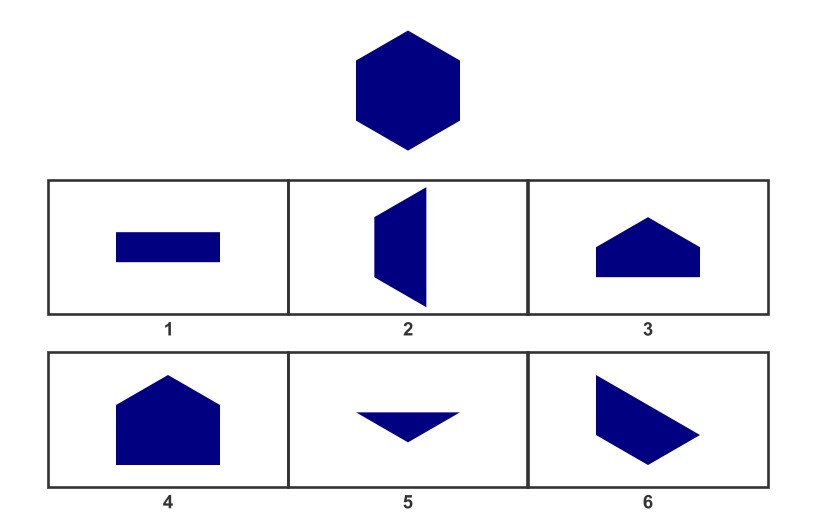The Wechsler Intelligence Scale for Children (WISC) test is often used as an entrance exam for gifted and talented programs for determining cognitive strengths and weaknesses, and is individually administered, usually by a psychologist.
This comprehensive, clinical instrument assesses the cognitive intelligence of children aged 6 years 0 months through 16 years 11 months. The major difference between how the test is given to each age is the starting point of the test; older kids will start at more difficult sections of each subtest. The WISC-V is the updated version which has more interpretive power, is more user-friendly and is also more efficient.
Testingmom.com helps prepare your child for the WISC-V test by providing challenging questions and games, and by making learning interesting and fun for your eight-year-old! We have 100’s of practice tests and games that will fully prepare your child for the WISC-V. Below are a couple of examples of our practice questions.
1. Visual Spatial Reasoning – Visual Puzzle Question:
Subtest measures your child’s ability to analyze and synthesize visual-spatial information. Within 30 seconds, your child views a completed puzzle, then chooses the 3 pieces that, when combined, make up that puzzle. In some cases, 1 or more of the pieces will need to be “mentally rotated” to fit into the puzzle.
Parent Instructions
Parent, say to your child: “Look at the shape on top. That is a completed puzzle. Choose the 3 pieces below that combine to complete the puzzle.”
-As the puzzles get harder, your child may have to mentally rotate or flip 1 or more puzzle pieces to make it fit into the puzzle.
-Your child’s responses can be in any order.
-Your child can point to or say out loud the numbers that make up her answers.
-Your child must select 3 pieces. In some cases, 2 pieces might complete the puzzle, but that isn’t the correct answer. There will always be 3 pieces that combine to make up the puzzle.
*On the test, students have 30 seconds to answer. Timing starts from the end of the question asked. When you are practicing this skill, don’t worry about the timing. Your child will get faster with practice. Just know that this is a timed part of the test.


Answer: 1, 3, 5
2. Fluid Reasoning – Matrix Reasoning – Analogies
Parent Instructions
With each question, here is what you shoud say and do:
Do you see these 4 boxes? In the top row the pictures go together in a certain way.
(point to the two pictures on top and make sure your child sees how they go together).
Now look at the bottom row. Do you see the empty box? Which of the 4 pictures in the answer row (point to the answer row) goes with the picture in the bottom box the same way the 2 pictures in the tip row go together?
3. Verbal Comprehension – Comprehension
In this section, questions are asked to assess whether or not your child understands the information, social standards of behavior, and common sense that other kids her age generally understand.
Where your child is asked a “why” question, encourage her to focus on the most significant reason first, then to give additional information after. So, if you ask your child why you should brush your teeth, you want her to say (something like), “So you won’t get cavities” first and foremost. Then she might go on to say, “Plus brushing keeps your teeth healthy and it makes your breath smell good.” If she answers by saying, “to clean your teeth,” you’ll want to encourage her to say more. “Tell me more?” “What else can you tell me about why you brush your teeth?”
The most complete answers receive 2 points. Less complete answers get 1 point. That’s why you want your child to say as much as possible about any questions she is asked. These questions get progressively harder and are discontinued after your child scores “0” on 5 consecutive questions.
Why does an ambulance have a siren?
One-point answer: So cars will get out of the way.
Two-point answer: Cars will get out of the way so the ambulance can get to the hospital or to the hurt person very fast.
